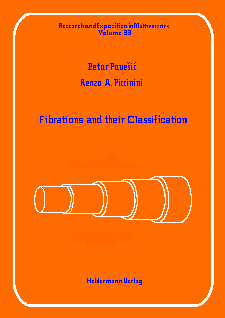Research and Exposition in Mathematics -- Volume 33
 Enlarged Picture
Enlarged Picture
Petar Pavesic, Renzo A. Piccinini
Fibrations and their Classification
xiv+158 pages, soft cover, ISBN 978-3-88538-233-1, EUR 28.00, 2013
The concept of fibration is one of the great unifying mathematical ideas.
It was initially introduced around 1930 in geometry and topology, and
gradually expanded into many other parts of mathematics. Together with fibre
bundles (which precedeed fibrations), they give formal expression to the idea
of a continuous family of spaces, and of operations on such families.
This monograph contains an exposition of the fundamental ideas of the theory
of fibrations with particular emphasis on their classification. It deals at
length with various types of fibrations as defined by Hurewicz, Dold and Serre,
as well as the quasifibrations of Dold and Thom. The relationship between these
concepts is analyzed in depth, with examples and counter-examples given. One of
the salient properties of fibre bundles is that they are classified by homotopy
classes of maps into some special spaces called classifying spaces. The classifying
theory for fibrations is presented both abstractly, through the theory of representable
functors, and constructively, by describing various models, like those introduced
by Dold and Lashof, and by Milgram and Steenrod.
In the couple of decades following their intoduction, the growth of the theory of
fibrations resulted in a plethora of similar and interrelated theories and classification
results for vector bundles, general fibre bundles, and other types of fibre spaces. As
a new organizational principle, Peter May invented the concept of F-fibrations that
generalizes all of the above, and is at the same time sufficiently structured to admit
workable classification objects. The second part of the book is dedicated to an in-depth
discussion of the theory of F-fibrations.
The book is reasonably self-contained and the reader is assumed to have only some
knowledge of general topology and basic homotopy theory, including elementary properties
of homotopy groups. However, one must be aware that the level of exposition is at some
places more advanced, and for these a prior course in algebraic topology or in the theory
of fibre bundles would be very helpful, both as a motivation for the problems that are
studied, as well as a measure of the required mathematical sophistication. The book can
be used both as a text-book or as a reference. Most chapters are concluded with historical
notes, tracing the origins of the concepts and the developments related to the classification
of fibre bundles and fibrations.
List of Contents
 Enlarged Picture
Enlarged Picture
 Enlarged Picture
Enlarged Picture